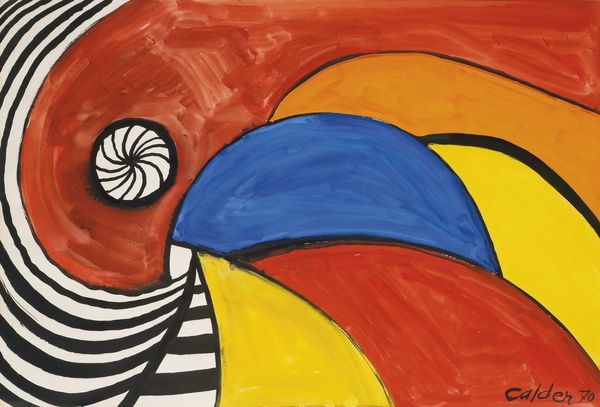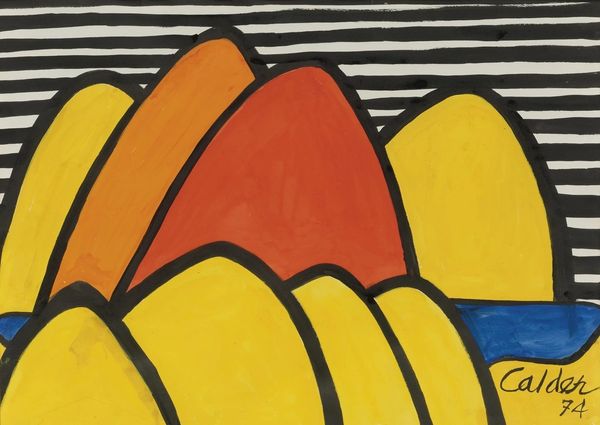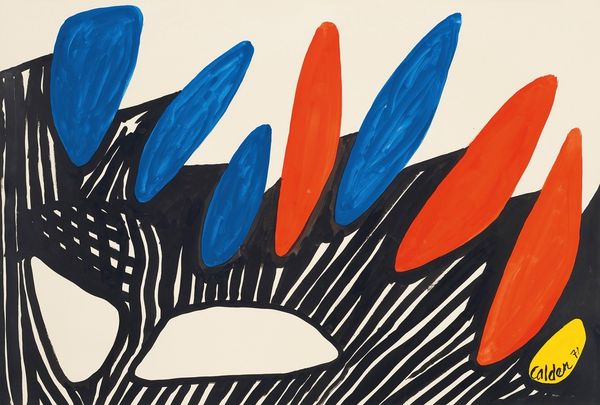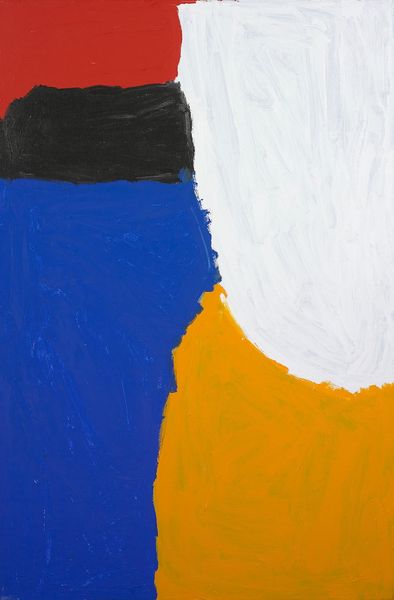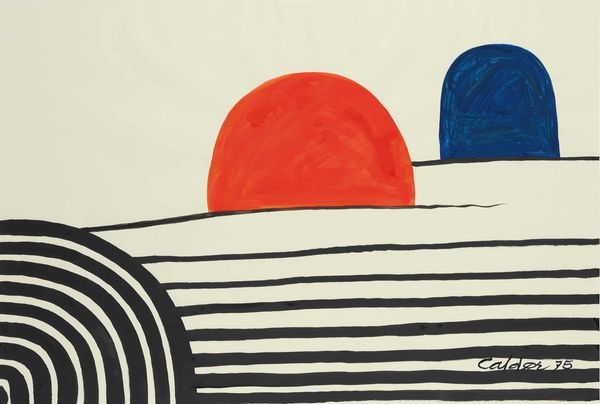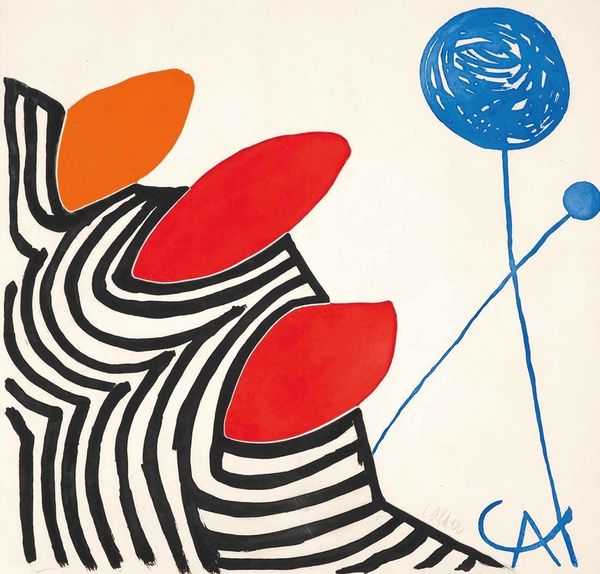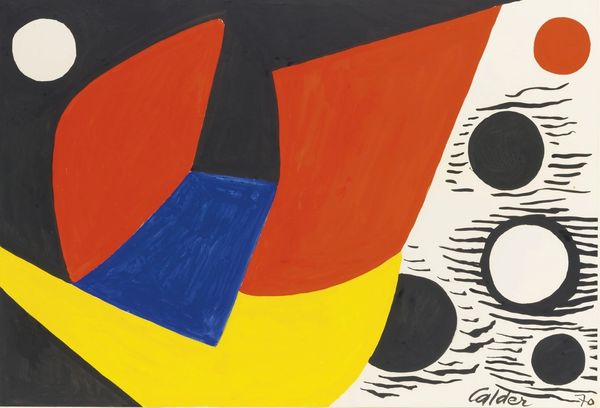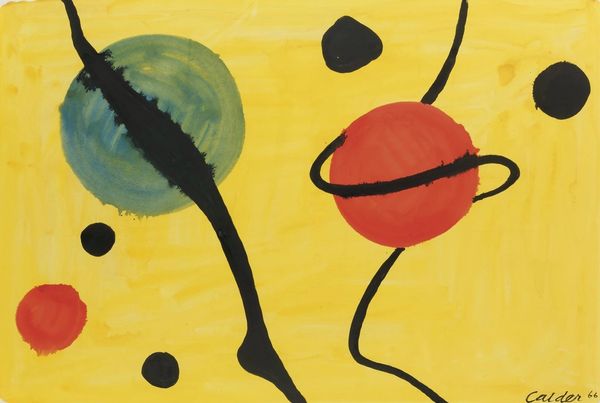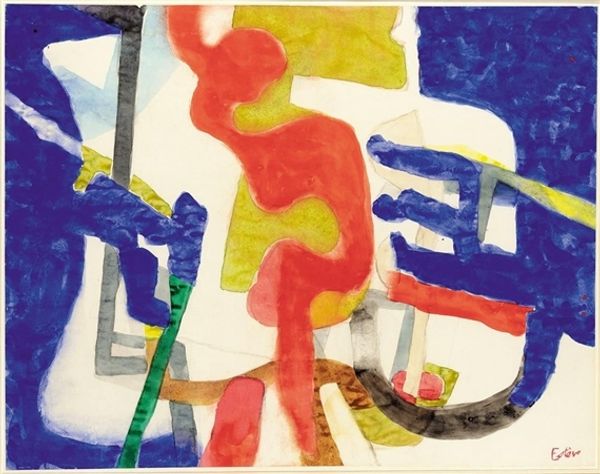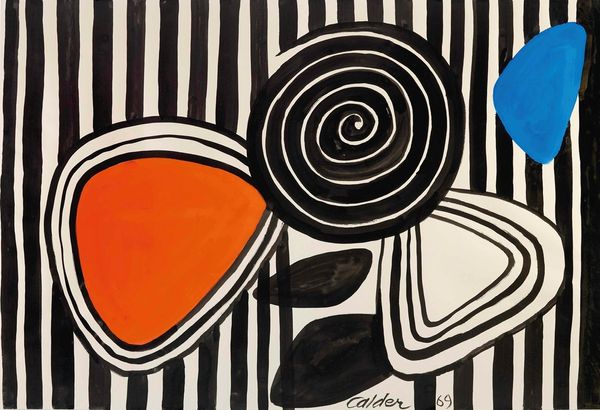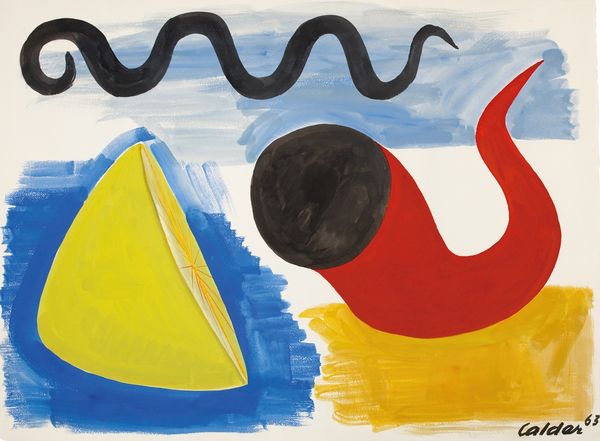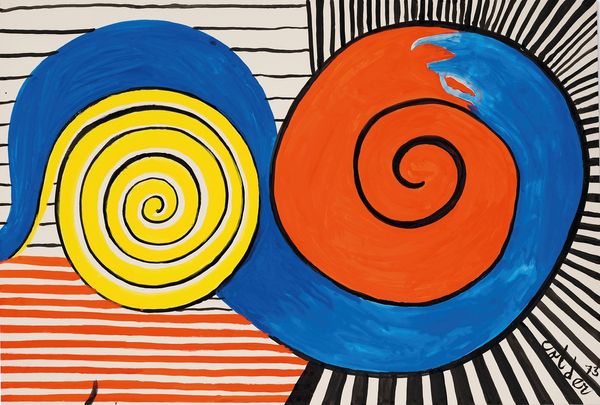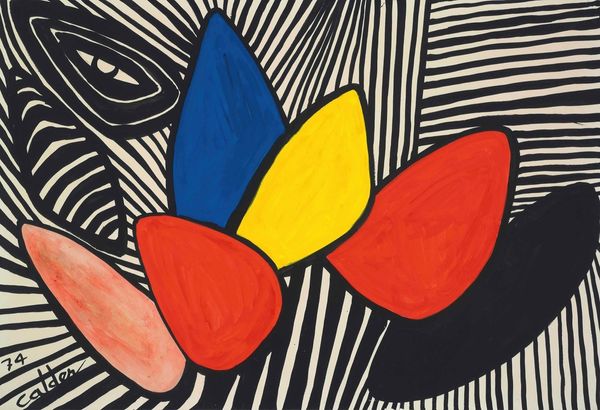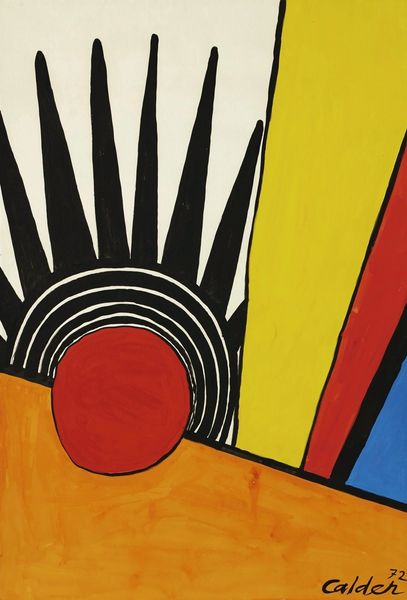
painting, acrylic-paint
painting
caricature
pop art
acrylic-paint
abstract
form
geometric
pop-art
line
Copyright: Modern Artists: Artvee
Curator: Let’s discuss Alexander Calder’s "Paysage Aquatique" from 1969. Calder is, of course, most renowned for his mobiles, but he also produced a significant body of paintings, as we see here rendered in acrylic paint. Editor: It jumps out! It’s deceptively simple, with those stark colors. I immediately think of Matisse cut-outs, that playful reduction to pure form. Curator: Indeed. There's a conscious naivete, linking it to the Pop Art movement bubbling up around this time, with its focus on everyday imagery but also it recalls back to pre war artistic freedoms where artist were engaging with political freedom. Editor: Those leaf shapes in black are interesting. Leaves are traditionally a symbol of growth and nature but set against those graphic planes of red, yellow, and blue, they seem to symbolize resilience and strength, and it calls to mind earlier work in Calder's artistic development with circuses, clowns, playfulness that later informed his artistic identity and production. Curator: Absolutely. And notice how he signs it—"Calder 69"—in the corner, almost as an afterthought. It speaks to the democratized status of the artist by this point, further embedding this kind of painting as its own movement beyond an earlier time in European Art History. It's an anti-establishment signature in a very understated way. Editor: The bright palette contributes, too. Yellow symbolizes energy and warmth; red, passion and vitality; blue, perhaps the cool tranquility of the water itself from the piece's title. This palette contributes to the artist’s own vision and symbolism, an image created during the apex of consumerism but speaking to simplicity. Curator: What’s fascinating to me is Calder's unique positioning. He had a wide acceptance among museum culture while managing to also incorporate avant-garde features within these accepted bounds. It's indicative of this work's power as we reconcile the role of art. Editor: I agree. And by reducing it to a playful rendering of shape and form, Calder evokes a feeling of primal joy through minimal representation, where color and shape are enough. Curator: Indeed. It leaves you with a feeling that even something as simple as color has weight. Editor: Exactly, there is powerful meaning carried in elemental parts of our visual vocabulary.
Comments
No comments
Be the first to comment and join the conversation on the ultimate creative platform.
